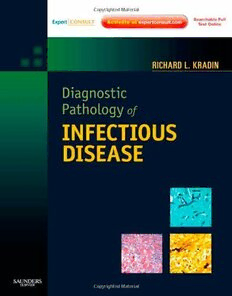
Diagnostic Pathology of Infectious Disease: Expert Consult: Online and Print PDF
642 Pages·2010·74.422 MB·English
Most books are stored in the elastic cloud where traffic is expensive. For this reason, we have a limit on daily download.
Preview Diagnostic Pathology of Infectious Disease: Expert Consult: Online and Print
Description:
Diagnostic Pathology of Infectious Disease presents a comprehensive, organ-based approach to the effective and accurate diagnosis of infectious diseases. Dr. Richard L. Kradin covers the latest information on H1N1, as well as the use of immunohistochemical stains, PCR, Immunoperoxidase, and other molecular techniques for a current representation of the field. High-quality, full-color illustrations and differential diagnosis tables accompany each lesion so you can quickly identify and diagnose whatever you see. Online and print, this reference is an invaluable tool for the accurate diagnosis of any infectious disease-from the common to the most challenging. Includes the fully searchable contents of the book online at expertconsult.com, along with a full image bank and access to PathConsult. Covers the latest techniques in immunohistochemistry and molecular genetics integrated throughout the text for comprehensive information on all investigative contexts relevant to ensuring diagnostic accuracy. Emphasizes the host responses critical in differential diagnosis to serve as a second opinion when non-infectious diagnoses mimic and confound the diagnosis of infection. Provides a complete visual guide to suspect lesions through superb, high-quality, full-color illustrations of key aspects of various diseases that facilitate the rapid identification of biopsy specimen. Presents contents organized by organ as opposed to pathogen to more effectively address diagnostic and management issues. Features tables that list differential diagnosis for each lesion for quick summaries of key points in problem areas. Highlights morphological characteristics and landmarks of tissue samples throughout the text for easy access to information necessary for signing out specimen. Focuses on clinicopathologic features and correlations so you can deal with the diagnostic problems you face every day. The most accurate resource to diagnose the pathology of infection Your purchase entitles you to access the web site until the next edition is published, or until the current edition is no longer offered for sale by Elsevier, whichever occurs first. Elsevier reserves the right to offer a suitable replacement product (such as a downloadable or CD-ROM-based electronic version) should access to the web site be discontinued.
See more
The list of books you might like
Most books are stored in the elastic cloud where traffic is expensive. For this reason, we have a limit on daily download.
